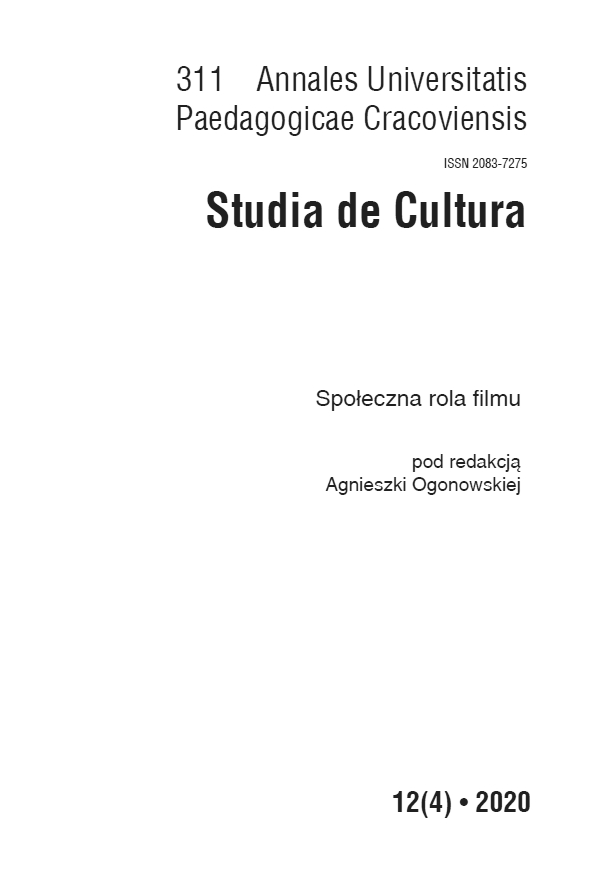Abstrakt
Bohaterowie filmów animowanych prezentują różnorodne postawy, poglądy i zagadnienia, w tym problemy o charakterze społecznym. Wielu animowanych bohaterów ukazywanych jest jako nośniki aprobowanych społecznie cech charakteru, posiadających ważną do spełnienia misję bądź walczących o wyższe dobro. Należy podkreślić, że bohater filmowy, jako kluczowy składnik opowiadania filmowego, stanowi centrum kierowania uwagi przez widza. Jego całościowy odbiór wraz z niesionymi przezeń wartościami, normami oraz zasadami okazuje się skutecznym narzędziem pracy podczas prowadzonych czynności edukacyjnych, wychowawczych, a także terapeutycznych. Dzięki podjęciu rozważań dotyczących społecznego wymiaru działań na przykładzie poszczególnych animowanych bohaterów możliwe jest dostrzeżenie powagi ukazywanych zagadnień we wciąż niedocenianych, niesłusznie uznawanych za „dziecinne” filmach animowanych. Rozwinięcie niniejszego tematu jest efektem samodzielnie przeprowadzonych badań nad przesłaniem animowanych dzieł o charakterze społecznym.
Bibliografia
Krajewska Anna. 2003. Obraz świata społecznego w filmach animowanych dla dzieci. In: Dziecko we współczesnej kulturze medialnej. Beata Łaciak (ed.). Warszawa. 194-220.
Michalski Jan M. 2010. “Animacja cyfrowa postaci w oparciu o animację klasyczną”. Zeszyty Naukowe Wyższej Szkoły Informatyki no. 1(9). 29-53.
Mytnik Joanna. 2018. “Educational and therapeutic impact of contemporary animated film characters on the viewer”. Konteksty Pedagogiczne no. 2(11). 151-163.
Puchała Jaśmina. 2016. Dwuadresowość filmu animowanego dla dzieci. In: Dyskurs w aspekcie porównawczym. Anna Zych, Andrzej Charciarek (ed.). Katowice. 213-229.
Sitkiewicz Paweł. 2009. Małe wielkie kino. Gdańsk.
Sitkiewicz Paweł. 2011. Film animowany w cieniu Disneya. In: Historia kina vol. 2: Kino klasyczne. Tadeusz Lubelski, Rafał Syska, Iwona Sowińska (ed.). Kraków.
Śmiałowicz Katarzyna. 2016. “Relacje między postaciami w filmach animowanych dla dzieci”. Ogrody Nauk i Sztuk no. 6. 464-478.
Witek Arleta. 2018. “Kreowanie poczucia kobiecości poprzez filmy animowane Walta Disneya”. Progress. Journal of Young Researchers nr 5. 90-98.
Filmography
Anomalisa. 2015. Duke Johnson, Charlie Kaufman (dir.). USA.
Brave. 2012. Mark Andrews, Brenda Chapman (dir.). USA.
Cars. 2006. John Lasseter (dir.). USA.
Coco. 2017. Lee Unkrich, Adrian Molina (dir.). USA.
Ferdinand. 2017. Carlos Saldanha (dir.). USA.
Frozen. 2013. Chris Buck, Jennifer Lee (dir.). USA.
Happy Feet. 2006. George Miller (dir.). Australia, USA.
How to Train Your Dragon. 2010. Dean DeBlois, Chris Sanders (dir.). USA.
Life. Animated. 2016. Roger Ross Williams (dir.). USA.
Moana. 2016. Ron Clements, John Musker (dir.). USA.
Persepolis. 2007. Vincent Paronnaud, Marjane Satrapi (dir.). France, USA.
Le Petit Prince. 2015. Mark Osborne (dir.). France.
The Prince of Egypt. 1998. Simon Wells, Brenda Chapman, Steve Hickner (dir.). USA.
The Princess and the Frog. 2009. Ron Clements, John Musker (dir.). USA.
Rango. 2011. Gore Verbinski (dir.). USA.
Sing. 2016. Garth Jennings. Japan, USA.
Snow White and the Seven Dwarfs. 1937. David Hand (dir.). USA.
Trolls. 2016. Mike Mitchell (dir.). USA.
WALL-E. 2008. Andrew Stanton (dir.). USA.
Zootopia. 2016. Byron Howard, Rich Moore (dir.). USA.

